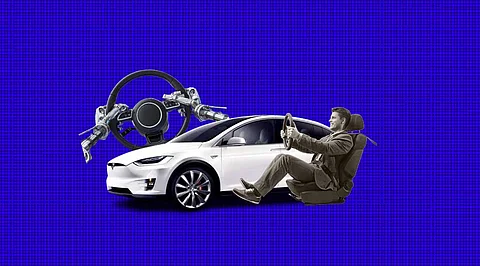

Could a simplified approach like the one described — variously referred to as "partial autonomy" or "driver assistance" systems — be the more practical approach to hands-free driving at a time when Tesla faces a federal investigation and lawsuits over fatal accidents involving its Autopilot system, shaking public confidence in robotic cars?
High ratings from the independent nonprofit Insurance Institute for Highway Safety are highly sought after; high ratings from this type of system, more like a no-nonsense chaperone than the one you would find in a fully robotic car, are a necessary component for top scores from the upcoming partial-autonomous technology ratings. Although General Motors is now leading the way with its Super Cruise system, Ford, BMW, and Mercedes-Benz are also attempting to follow suit.
Super Cruise combines cameras, radar, and onboard GPS with incredibly precise, 3-D laser-scanned road maps. The system's network will be extended to include two-way undivided highways for the first time by the end of this year, and its operational range will be doubled to 400,000 miles. On several of North America's most famous byways, like the Trans-Canada Highway, Route 66, and the Pacific Coast Highway, doing so would enable hands-free driving.
None of this implies that automakers are giving up on the vision of completely driverless vehicles. Along with Tesla, G.M. Cruise, Alphabet's Waymo, and Argo AI continue to develop and test robotaxis in areas like Miami and Austin, Texas, while having human safety operators on board. In San Francisco, Cruise started charging for robot taxi rides in modified Chevy Bolt EVs, and the company is currently mapping Dubai in preparation for the launch of a robotaxi program there next year.
However, as confidence in completely autonomous technology has declined, so has it. Bryant Walker Smith, an associate professor in the Schools of Law and Engineering at the University of South Carolina who has advised the federal government on driverless vehicles, stated, "The systems perform beautifully, right up until they don't." "We don't fully understand the winning combination to cover most of the driving individuals do," said the speaker. In addition, after a June two-car crash that resulted in two people being hurt, Cruise momentarily suspended and recalled its 80-car fleet for a software repair. A G.M. public filing indicated that the company's robotaxis had, before the crash, safely completed almost 125,000 left-hand turns through gaps in oncoming traffic and that law enforcement had cited the human-driven automobile as being largely at blame, including for speeding.
According to David Harkey, president of I.I.H.S., the industry's assessment of the technical difficulties and the resulting public disappointment are obscuring real advancement. For starters, the components for automobiles with partial autonomy are now available in every dealership. As of September, all new cars must have automated emergency braking, thanks to a voluntary agreement reached in 2016 by automakers, the I.I.H.S., and the National Highway Traffic Safety Administration.
According to the IIHS research, such radar- or camera-linked brakes have reduced rear-end collisions that were reported to the police by a startling 50%. Mr. Harkey also noted that automated pedestrian braking has decreased the number of car-human collisions by 30% compared to vehicles without the feature. Additionally, adaptive cruise control, anti-lock brakes, cameras, radar, and ultrasonic sensors for managing blind spots and lane departure monitors have all become standard.
"We considered that technology to be helpful, and some future technology will be no different. To save more lives and avert crashes, we will keep pushing for more features to be added to more vehicles, according to Mr. Harkey.
The trick, according to him, is to expand on this promise with systems that substantially increase safety while maintaining human drivers' control. These are not driver replacement systems; they are driver support systems. Some consumers are unaware of the distinction, he claimed.
The I.I.H.S. is testing what it refers to as "partial-autonomous" cars, which is another way of saying "driver-assisted" vehicles. The nonprofit organization intends to publish its first "Safeguard Ratings" this fall to aid customers and encourage businesses to adopt the best features.
Join our WhatsApp Channel to get the latest news, exclusives and videos on WhatsApp
_____________
Disclaimer: Analytics Insight does not provide financial advice or guidance. Also note that the cryptocurrencies mentioned/listed on the website could potentially be scams, i.e. designed to induce you to invest financial resources that may be lost forever and not be recoverable once investments are made. You are responsible for conducting your own research (DYOR) before making any investments. Read more here.
